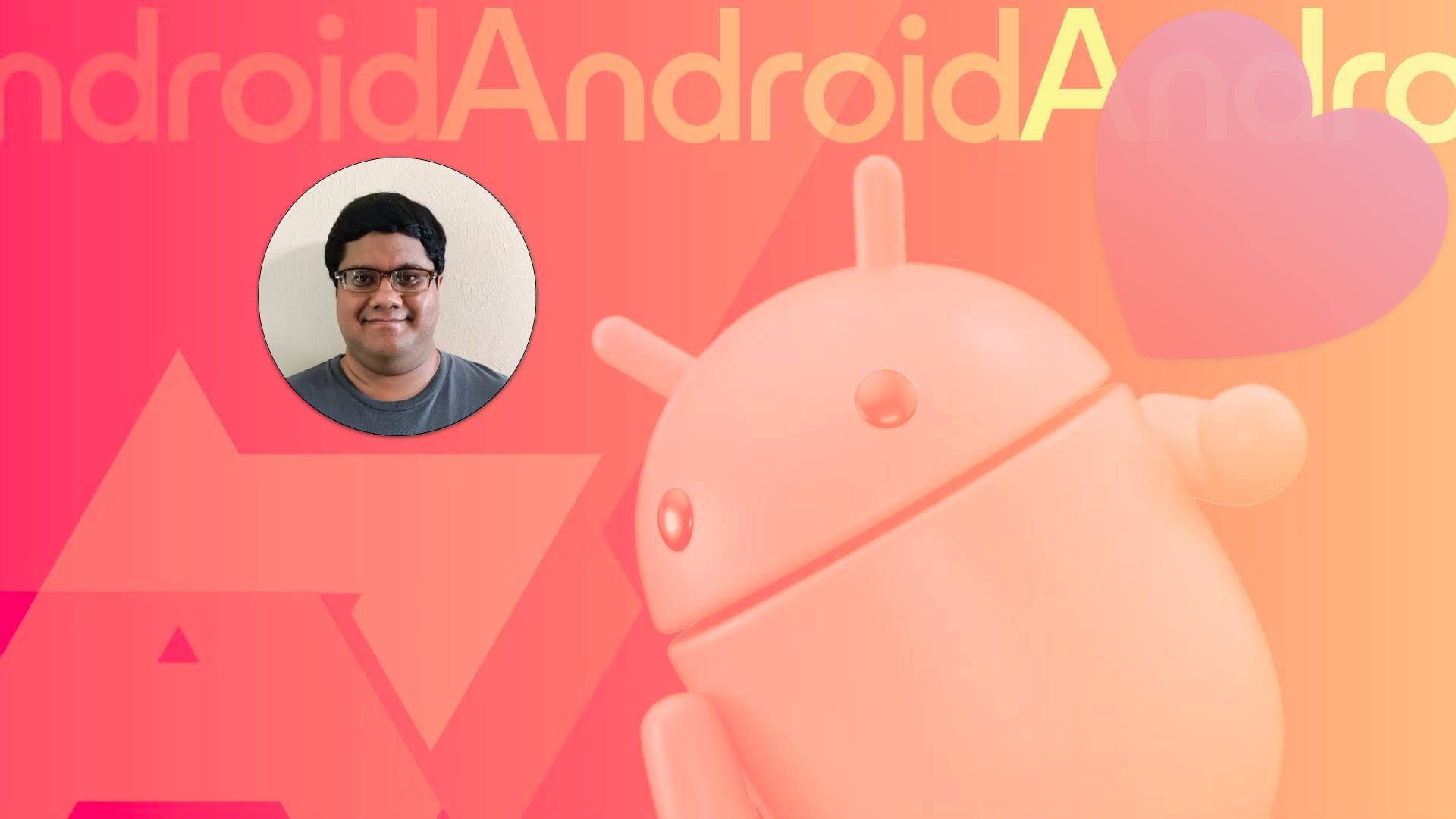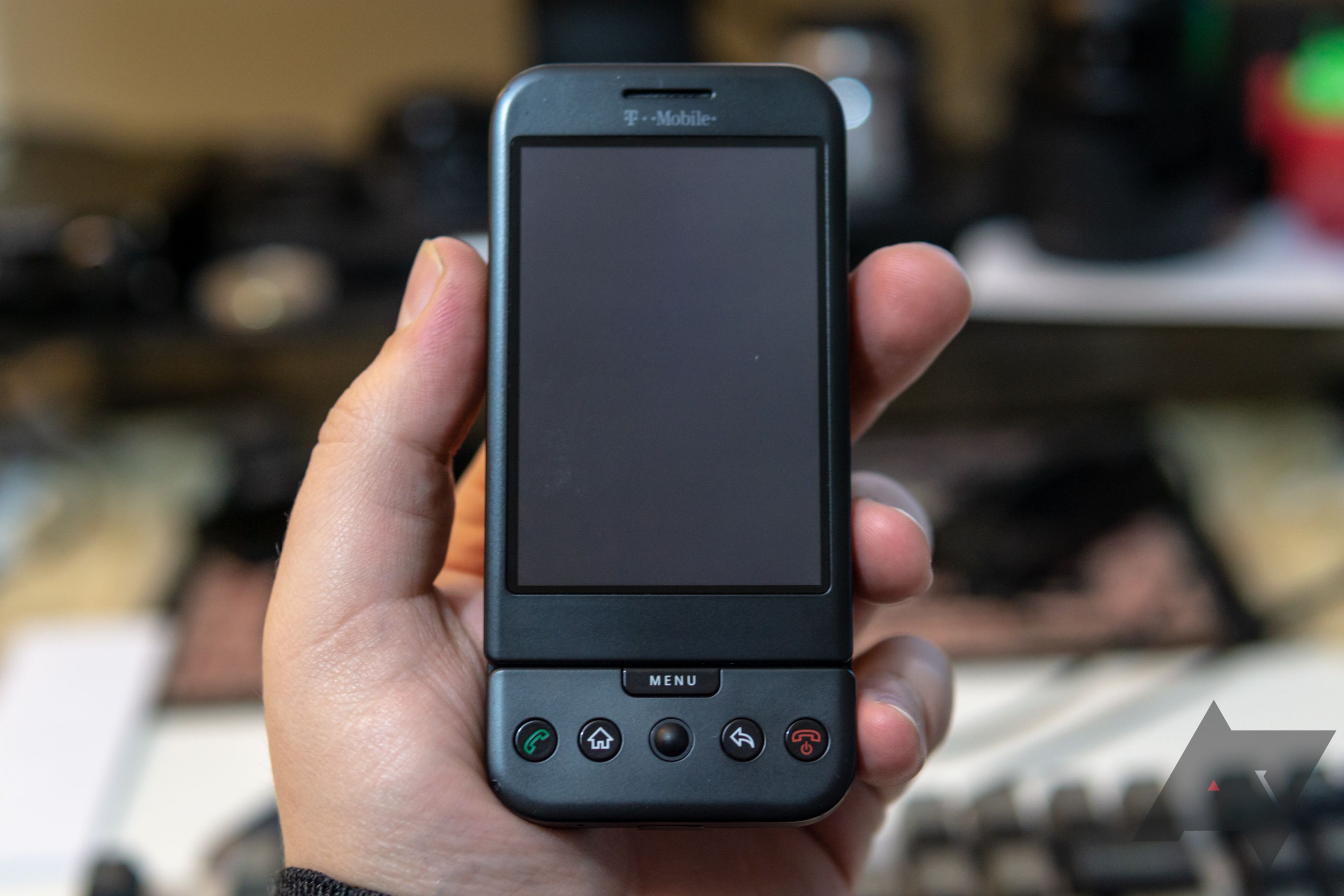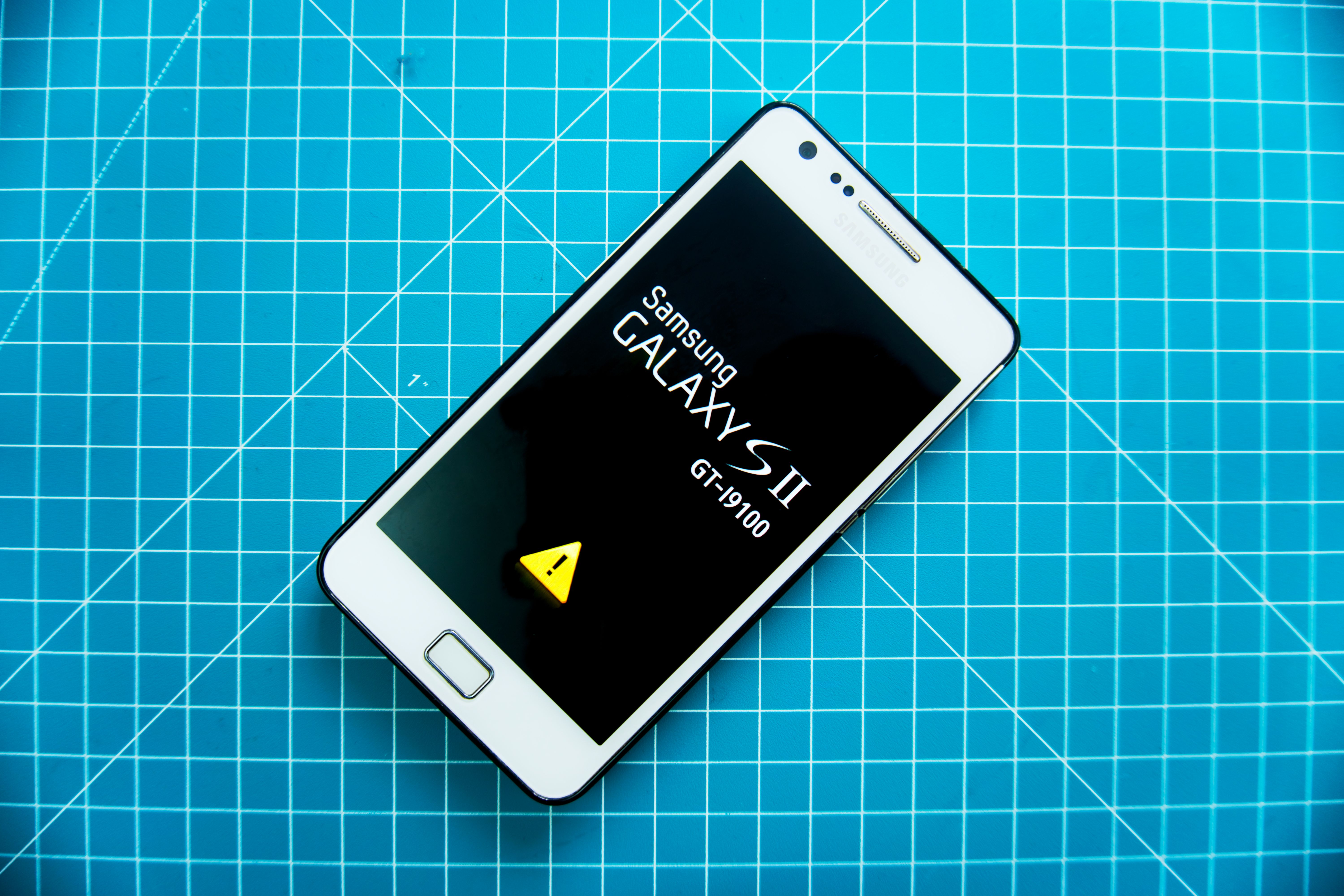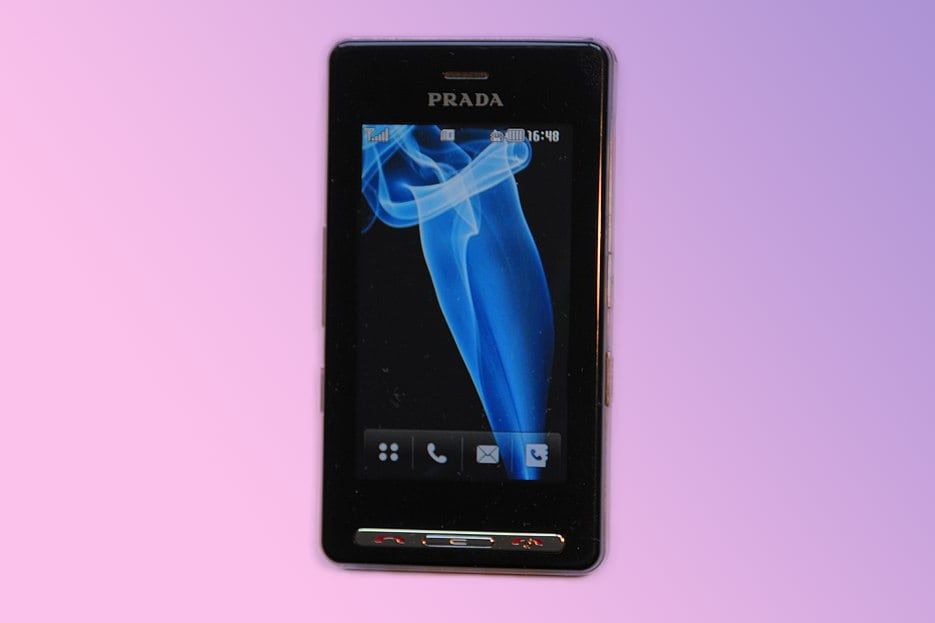Android has been with us for more than 15 years now, or even longer depending on how you count. What was once merely meant to be an OS for cameras has turned into the operating system powering some of the best smartphones around the world, and we’re coming up to Android 15 later in 2024. Android has made its way to more devices, like tablets, but also more unlikely use cases like IoT devices and even point of sales terminals.
Many people live and breathe Android, and here at Android Police, we want to give these people a voice. That’s why we created this series where we talk to some of the most important and interesting people in the industry, asking them what kickstarted their interest in Android, what they find so great about the operating system, and where it will take us next.

What do you love about Android, Mishaal Rahman?
Our new monthly interview series is kicking off with arguably the most prominent Android expert out there
Our next interview is with Myriam Joire, a veteran of the tech media industry. She’s a video game developer turned tech and car journalist and has been covering smartphones since 2005, long before Android and iOS were even a thing. In that time, she’s had her hands on almost all the legendary devices we still talk about today. She works across numerous publications, including TechRadar, HotHardware, Geekspin, and many more. You can listen to her on her very own Mobile Tech Podcast, too.
Android Police: Hey Myriam Joire, tell us about your first Android device and what made it special.
Myriam Joire: I bought the original Android phone, the T-Mobile G1, the one that started it all. I got it with my own money, and it was easy because I was a T-Mobile customer in the US. Back then, buying unlocked phones was really difficult.
At the time, my main phone was a Nokia N95 and I also had a first-generation iPhone (more out of curiosity). I got an AT&T account just for that. Naturally, when the G1 came out, I had to try it and immediately loved it. Sure, it was bulkier than the iPhone because it had this very cool hinge thing. It was all very plastic, too, but I liked the software experience. Even though it wasn’t as polished as Apple, I enjoyed it right away.
The T-Mobile G1
After that, I got a Motorla Droid on Verizon – kind of the second important Android phone if you think about it. It was a collaboration between Google, Motorola, and Verizon. I think I managed to borrow that one as a review unit and only kept it for a few months. Then, I bought my own Nexus One. So in that quick two-year period, I went for the G1, then traded it up to the Nexus One, and also tried the Droid. The Droid convinced me to switch to Android, but I didn’t want to be on Verizon and didn’t like the sliding keyboard.
That’s when I first left Nokia and moved fully to Android. I’ve been a Nexus and Pixel person ever since, though I’ve strayed a few times into BBK land with, for example, a OnePlus 8 Pro. They fit my hardware needs, but I didn’t keep them (these were all review units).
I just can’t stay away from Nexus and Pixel despite things I don’t like. I keep going back. There were a few that stood out in particular — God, the Nexus 5. I freaking loved that!
That ties in with our second question — what’s your favorite Android device ever and why?
The Nexus 5 is definitely up there in my top five, but it might not be my all-time favorite. The Pixel 6 Pro was another one of my favorites – it was just so good. I went from the 6 Pro to the 8 Pro. I held off on switching from the 7 Pro because I loved the 6 Pro so much.
There are a few phones that really stand out. The HTC Incredible, one of the first Verizon phones after the Droid, was fantastic. It was basically HTC’s version of the Nexus One, but a little more high-spec. I remember wishing they’d release that phone with pure Android instead of the custom skin.
It wasn’t until the Galaxy S2 that I started paying attention to Samsung. The camera blew me away. Before that, they were just barely on my radar. Of course, I can’t forget my HTC bias – the Nexus One started it. It was so good, and after it, I wasn’t impressed by the plastic build of the Galaxy S2 and Galaxy Nexus.
For a while, I was also a huge LG fan. The G4 stands out for me – it was the first phone with OIS on the camera, and it took incredible pictures. I took it with me to Iceland and the camera really shined there thanks to that OIS for night shots.
The Samsung Galaxy S2
Let’s see, trying to round out the top five. There’s the original Galaxy S2, the LG G4, the Nexus 5… maybe a Huawei device or the Pixel 6 series in general. The Pixel A series also comes close, but I’ve never daily-driven them beyond reviews. The original Nexus One was truly a landmark phone for me, but a lot of phones really impressed me after that – the Huawei P40 Pro Plus is still amazing today. You see, it’s really hard to pick a list.
The Google phones are definitely among my most favorite ones. It’s interesting, because while I love the Pixel’s software experience and think the cameras are great, it feels like it took until the 6 series for them to really get the hardware right, save for the Tensor. That’s why I’m kind of trapped with Pixels now. I feel like a Tesla person in that way, I have a Tesla. I feel trapped because as I hate Elon, I love the product and the experience, but I don’t want to buy another one. Quite like if you’re an Apple user today, you’re on an iPhone because of your family and everyone in the ecosystem. With Pixels, I feel trapped because of the great software. My biggest issue with Pixel hardware is the Tensor chip.
When and how did you first learn about Android?
I was already covering phones as a journalist, I started in 2005. I witnessed the launch of both the iPhone and Android, becoming aware of them even before their official announcements. Before Apple’s release, there was the LG Prada – the first phone with a capacitive touchscreen. This convergence showed where the industry was headed.
Everyone was doing something interesting. Nokia had impressive hardware and software (even if the experience wasn’t great), like GPS, a five-megapixel autofocus camera. The N95’s specs make the original iPhone look like a joke. The iPhone only had that large display going for it, everything else was pretty basic.
Hardware was evolving, but features like mapping with directions didn’t arrive on Android until the Droid, with Android 2.0. That’s when Google Maps could navigate you in your car – something we take for granted today. Apple added that six months later, Nokia didn’t have it on their Series 60 platform. It’s surprising it took them so long.
Those were the early days – on one hand, you had Nokia, and on the other, Blackberry with its fantastic push-based messaging and email. I tried Blackberry for a while, and while I wasn’t a fan, I have to admit it was excellent for its specific purpose.
At the time, there were factions that did specific things well – Sony Ericsson’s camera phones, Moto’s super-thin phones – but it was fragmented. It all came together with Android and the iPhone.
The LG Prada
So, I was following all these developments, and Android was initially a rumor, around the same time as the LG Prada. We knew the iPhone rumors were swirling even before Steve Jobs’ incredible keynote (which I was lucky enough to witness firsthand). Before all that, there were rumblings of an OS made by Google, but we imagined a Blackberry-like experience. We didn’t understand finger-based touch – the Prada was the first with that, but it was a dumbphone and very expensive. We knew finger-touch existed, but it wasn’t until the iPhone that it really worked. Even the G1 wasn’t that great – it was clearly still designed for a keyboard, with the trackball feeling like Blackberry inspiration. It was like they added touch at the last minute.
So, that’s how I first heard about it – it wasn’t even called Android, just rumors of Google working on something. And of course, the Android team came from Danger, the company behind the Sidekick. It’s crazy to think how another product, the Sidekick (which I didn’t care about then), was also critical to where we are now. Apple added their magic, Android blended it all together, along with the best of what Nokia and Blackberry were doing.
What do you love most about Android?
It’s all about workflow for me, partly out of habit. I have an iPhone 15 Pro Max, and it’s a very good phone – I recommend it. But it would never be my main device. Even though it feels fast, smooth, and optimized (Instagram is honestly so much better on the iPhone), the workflow isn’t there for me.
This is partly my own fault for not being used to it, but I crave a super productive environment. For example, having a foldable Android lets me work almost like I’m on a laptop. I did a briefing on my OnePlus Open yesterday, no laptop needed. That kind of power on a phone is incredible. Even on my regular Pixel, which doesn’t have this much screen space, the multitasking and organizational experience feels more comfortable.
With the iPhone, I can’t build those same kinds of workflows. I get frustrated because it often feels like I’m not getting the basic tools of computing. I’m older. I learned DOS, and I worked on Unix/Linux. I need that level of control and granularity. I know I could run Python in a shell window if I had to, but that’s not what the iPhone is built for.
For some people, customization is key. For me, it’s less about the visuals and more about that fundamental workflow, the feeling of Android being closer to a “real computer” for the way I like to work.
Someone might say “But Android is so customizable!” And while that’s true, I don’t even do that much. A new background, rearranged icons, that’s it. My five main home screen apps are the Phone app, messaging, Play Store, Chrome, and the camera. Everything else, I find through the search bar in the app tray.
I like that I can keep things simple. On a Samsung, I might install Nova Launcher to make it feel more like my Pixel since I dislike Samsung’s default side-scrolling app tray.
There’s an appeal to things like custom ROMs, but honestly, I just don’t have the time for that anymore. Between reviews and news, I can’t risk bricking my main phone. The option is there, though, and I appreciate that.
For some people, customization is key. For me, it’s less about the visuals and more about that fundamental workflow, the feeling of Android being closer to a “real computer” for the way I like to work.
If there is one thing you could change about Android, what would it be?
This is a tough one. I feel like one of the current problems is the heavy skinning and customization by different manufacturers. Customization has its benefits – it introduces new features that eventually get rolled into mainline Android, whether it’s Samsung, Google Pixel, or others. Lately, though, features have been moving fast between brands, which is good. More consistency would really make me happy. As much as I love Android’s flexibility, I want the core experience to be more unified.
Imagine losing your phone – even if you wipe it remotely and get a replacement, you’re facing hours of setup. Android should let me restore everything – logins, app data – in an encrypted transfer. It’s been almost 20 years, and they haven’t figured this out!
My other major issue is this: Why can’t I have the same upgrade experience on Android that I have on an iPhone? Even when staying within one brand, why can’t I have everything restored from an encrypted backup on Pixels? I know there are transfer tools, but my experience going from my Pixel 6 Pro to 8 Pro wasn’t seamless. I still had to log into all my social media accounts and recover a lot of missing app data. That’s unacceptable when you have a ton of important apps on your phone.
Imagine losing your phone – even if you wipe it remotely and get a replacement, you’re facing hours of setup. Android should let me restore everything – logins, app data – in an encrypted transfer. It’s been almost 20 years, and they haven’t figured this out! It’s genuinely frustrating because the iPhone experience is so much better.
You might argue about Apple’s closed ecosystem and similar hardware, but that doesn’t fully explain it. Can’t we at least have that seamless transfer experience between Pixels or between Samsungs? That’s my gripe, and it’s something I’m passionate about.
Tell us about an Android app or game you can’t live without, and why?
Aside from the standard Google apps, which I use extensively, here’s a slightly less common app I find indispensable: It’s called BubbleUPnP. It’s a media player that supports Universal Plug and Play (UPnP), allowing me to send audio from my Android phone to UPnP devices. This is perfect for older devices that don’t support Chromecast or AirPlay.
For example, I have an older, high-end Devialet sound system. The manufacturer no longer supports it, and upgrading would be expensive. Since it doesn’t have AirPlay or similar features, I use BubbleUPnP to stream music from my Android phone to this sound system.
The app offers both a free version with ads and a paid version (which I purchased). It supports various network technologies, making it a really versatile casting solution.
What advice would you give yourself at the start of your career, today?
That’s a great question. I’d tell myself to be more aggressive about reaching out to brands and companies. Early on, I’d buy phones and return them just to test them out – this worked in the early 2000s when there weren’t restocking fees.
Eventually, PR people started sending me phones, and Nokia was really smart with their early blogger outreach program. But I could have pursued this more proactively. My advice to creators and media today is to build those relationships. Get introductions – I’m always happy to connect people with PR contacts.
Another thing – and I don’t regret this, but I had an early YouTube channel that was gaining popularity when I joined Engadget. They asked me to stop publishing on my own channel. If I’d continued, I might be as big as Marques [Brownlee] today.
So, my advice today is this: Never agree to a non-compete clause. Your personal brand and content are paramount. It’s great to work for a company, but keep building your own brand, even if it has to be on the side. It’s hard to regain momentum later.
Finally, be aware that non-competes are illegal in many states. Use that as leverage in negotiations – point out that forward-thinking companies aren’t using them anymore. You don’t want to work for a company that restricts your ability to work elsewhere.
Do you have a fun fact about Android that many people may not know?
Well, this isn’t exactly a secret, but in the very early days of Android, you couldn’t record video at a higher resolution than 240 by 320. I’m not sure if everyone knows that, but it was a big annoyance for me when I had my G1. I mean, some Samsung dumb phones were doing 720p HD video, the iPhone was doing VGA, and Nokia phones had been doing VGA (640 by 480). Android’s limit was painful, especially considering the G1’s screen – around three inches or so.
Anyway, I don’t know if it’s a super secret fact, just a fun one. Similar to how the original iPhone didn’t have video recording at all – we always poke fun at the iPhone for missing some early features.
Another fun fact: the first generation, maybe even the first two versions of Android (I’d have to research to be sure), didn’t have pinch-to-zoom. So, no pinch-to-zoom in maps or photo apps. For a long time, Android used double-tap to zoom in, then you had to manually zoom back out. Imagine how frustrating that was. The first iPhone introduced pinch-to-zoom and it blew everyone away. It’s kind of crazy that the G1, launching a year and a half later, didn’t have that for at least the first year.
So yeah, there’s a fun Android fact. If people like to make fun of the original iPhone, they can also make fun of the original G1. It was kind of a rough phone in some ways, but hey, you have to start somewhere!







